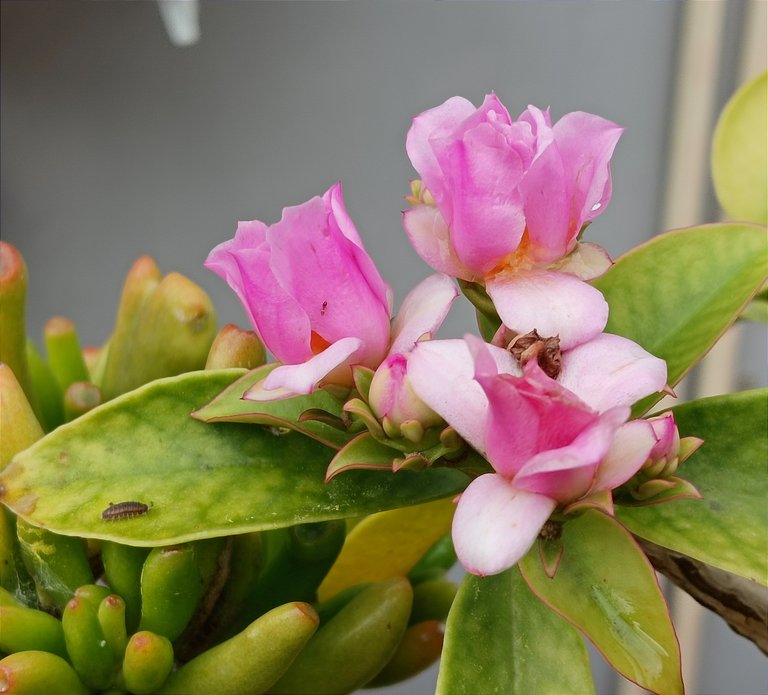
A very unique and unusual cactus and a very pretty one too. A cacti with beautiful flowers all year around puts it very high on my list of favorite cacti. It is a leafy plant and doesn't have succulent like stems. The stem of this cacti is spiky but more like a rose than a cacti. Although there are some varieties which have such large spines which hurts like hell if accidentally touched.
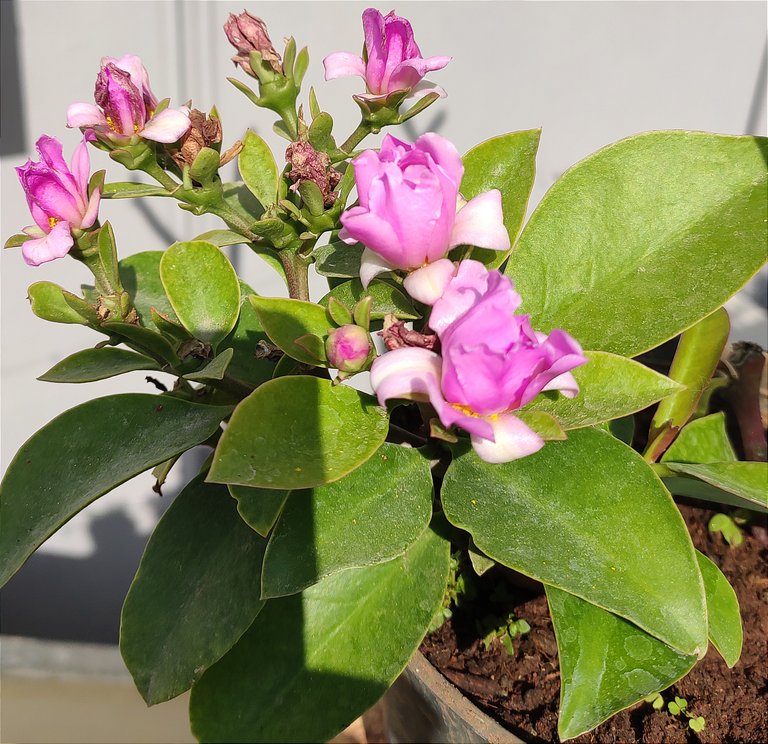
There are about eight or more varieties of pereskia's out there and I had four, one of which I threw away because in my small terrace garden space it grew wild, trailing all around and climbing over the walls. The spikes were extremely long making it difficult to prune and causing me to be bleed so often. Since I am on anticoagulant and antiplatelet drugs I need to be cautious about anything that causes me to bleed. So, I had to sadly give these plants away.
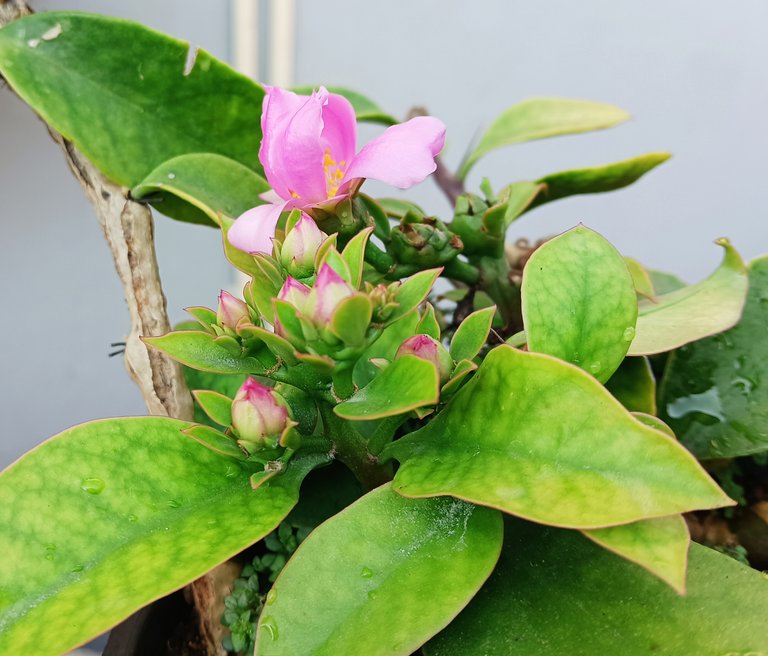
The pereskia grandiflora has the least amount of thorns/spikes and can be kept safely even with pets around. However, with small children one needs to take all the precautions while growing any thorny cacti.
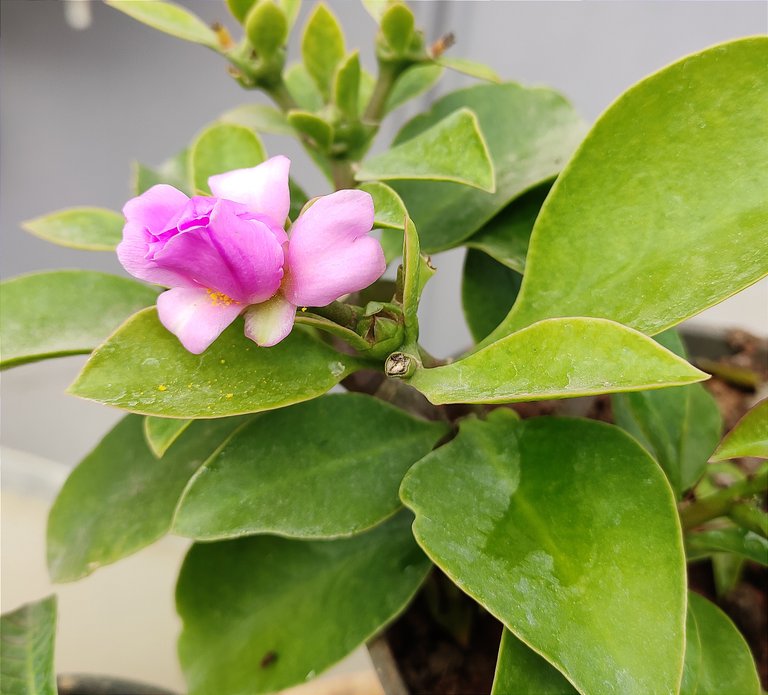
The bright pink flower buds and slightly opened blooms of the grandiflora variety look very much like roses. However as the flowers bloom it looks like like any other five petal flower with yellow pollen in the center.
The pereskia is a very easy plant to grow, it thrives on neglect. Planting it in well draining cactus soil takes care of root rot and other problems. The plant is not troubled by pests as far as I have noticed. However, it does need more water than other cacti as it does not store much water in its stems. In some varieties the leaves are thick and they do store a bit of water but unlike other succulent these don't succumb to root rot easily.
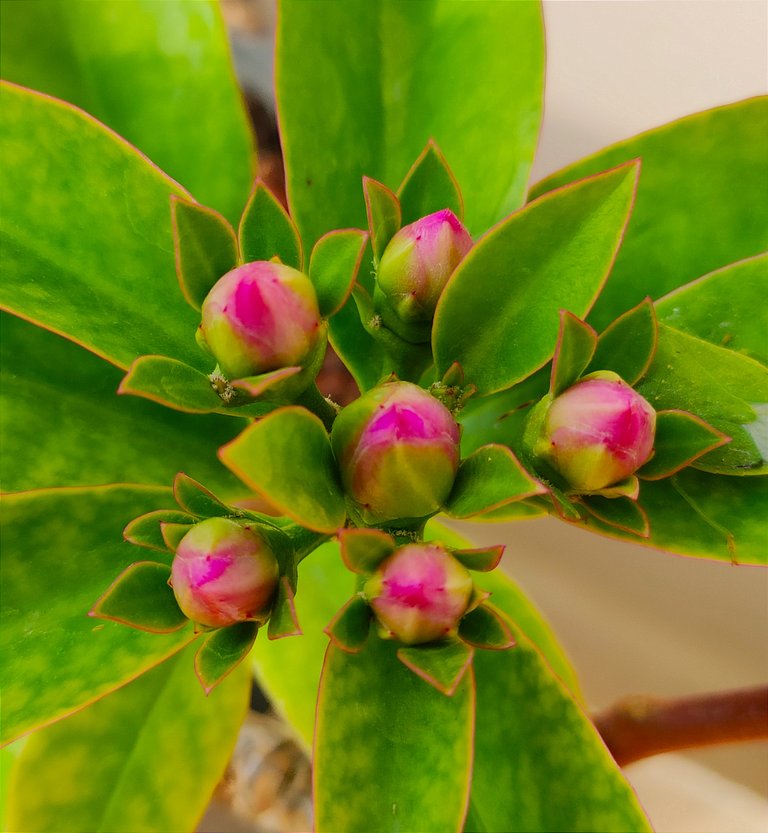
Feeding the plant with a balanced fertilizer during the growing season helps the plant bloom heavily. Pruning and dead heading help make the plant bushy and produce more blooms. I also prefer to keep these plants short and bushy as they have a tendency to grow leggy and wild.
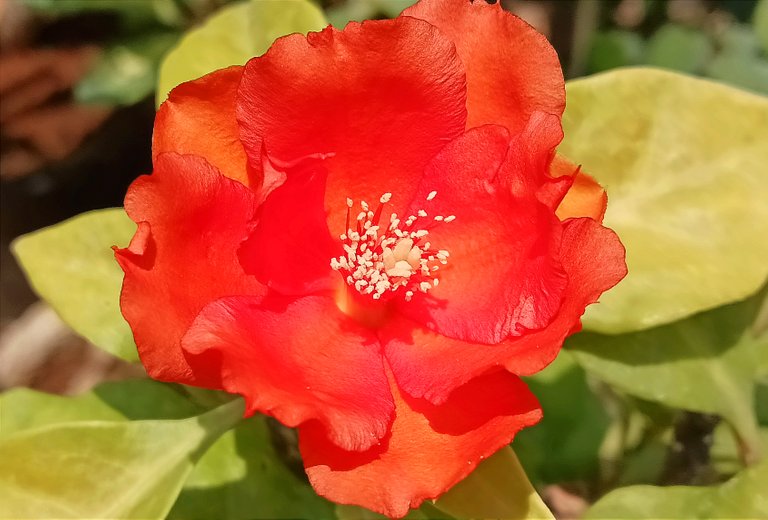
The pereskia bahiensis is much more thornier than the grandiflora variety. Nonetheless the attractive orange flowers make up for the thorns. One needs to definitely wear thick gloves while working with these plants, especially while pruning and deadheading.
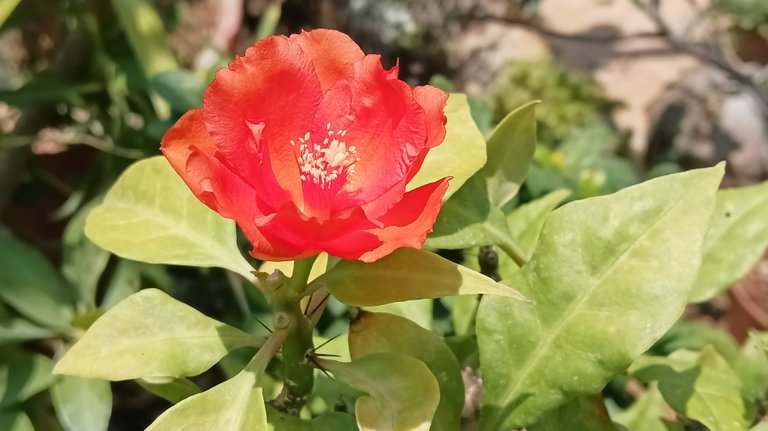
Propagation can be done through seeds and stem cuttings. I find growing them through stem cuttings to be an easier option. These plants make for great hedges. These plants require 6-8 hours of direct sunlight to bloom. They can take the brunt of the harsh summer sun of the tropics and subtropical regions. I have never noticed any sun scorching on the leaves (around ten years or more) in all these years I have kept them.
The leaves of the pereskia remain ever green and pretty all through the year. However, some varieties are semi deciduous. They do drop their leaves after the blooming season. In our kind of weather we need to water these plants once everyday in summer and one in two days in other season when there is no rain.
Pereskia aculeata / Barbados Gooseberry / or Lemon vine as it is commonly known produces bunches of cream colored flowers. They also produce small gooseberry like fruits which are edible, bright red and look very attractive. Most people grow these plants for their attractive looking fruits. This variety climbs along walls and make for great arches, but beware the spines. I didn't have this variety until a couple of weeks ago. I just got a few cutting from a friend and I hope to see them in bloom next summer.
I find the pereskia to be a very heat tolerant plant, easy to grow if you have the space and the inclination. These are cacti which look like other spiny, flowering plants. The leaves of each variety looks rather different and make it easy to identify the plant even when its not in bloom.
The stems of these pereskia's can be used as root stock for grafting other cacti on them. I have grafted some mammillarias and echinopsis on them some years ago. So, these do serve a purpose other than looking pretty like other ornamental plants.
Thanks for taking the time to read, I appreciate your support greatly.
I would never say that this plant is a cactus, it looks more like a ficus. Very interesting.
So true, it doesn't look like one, but you'd feel it when you handle it.
Thanks for stopping by, have a lovely day @roninrelax
I take your word for it and don't want to take it in my hands :)
😂 You are very cautious.😅
Yes there is a bit :)
!BEER for @sofs-su
View or trade
BEER.BEERHey @sofs-su, here is a little bit of from @roninrelax for you. Enjoy it!Learn how to earn FREE BEER each day by staking your
BEER.Thank you @roninrelax
We don't see Pereskia for sale here, it's an invasive species. It's pretty though
I guess varieties other than the grandiflora are invasive. This one seems to be a slow grower. Mine hasn't grown much in the last five years.
Other than the lemon vine /Pereskia aculeata none of the other varieties are sold here either.
I got most of what I have through the cacti and succulent groups we have locally. Here we exchange our plants with others in the group.
I don't do this any more as I have been cheated so often.
Thanks for the curation and support. I appreciate this very much.
Have a wonderful day @nikv
I don't think I've ever seen one before. I would love to have one of those cacti, which by the way, although I love cacti, this one doesn't look like one.
That is surprising, maybe its not very popular because of its invasive nature. Nonetheless I love these two three varieties that I have right now. The flowers are really stunning and the fruits of the Pereskia aculeata entices me want to create a bonsai tree out of it. Make be I will give it a try when the cuttings take root.
Thanks for the support @coquicoin . This is much appreciated. Have a great day!
😊🌸
!LUV
(1/3) sent you LUV. | tools | discord | community | HiveWiki |
HiveWiki |  NFT | <>< daily
NFT | <>< daily